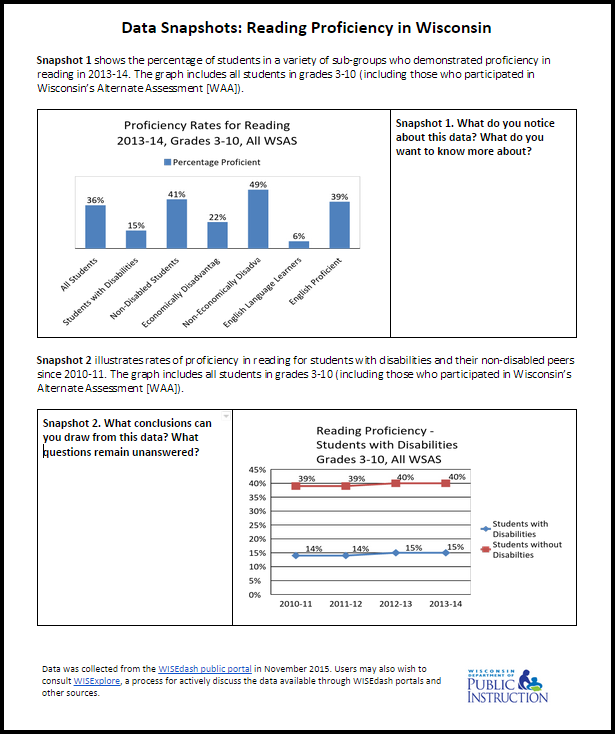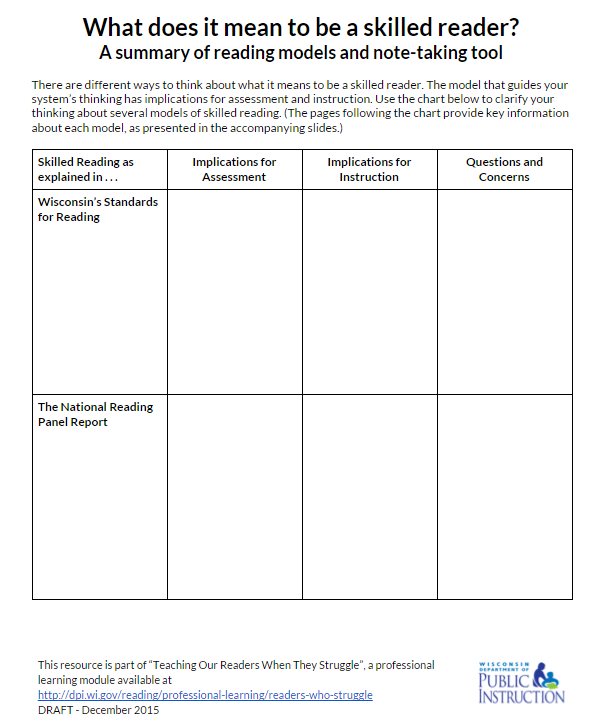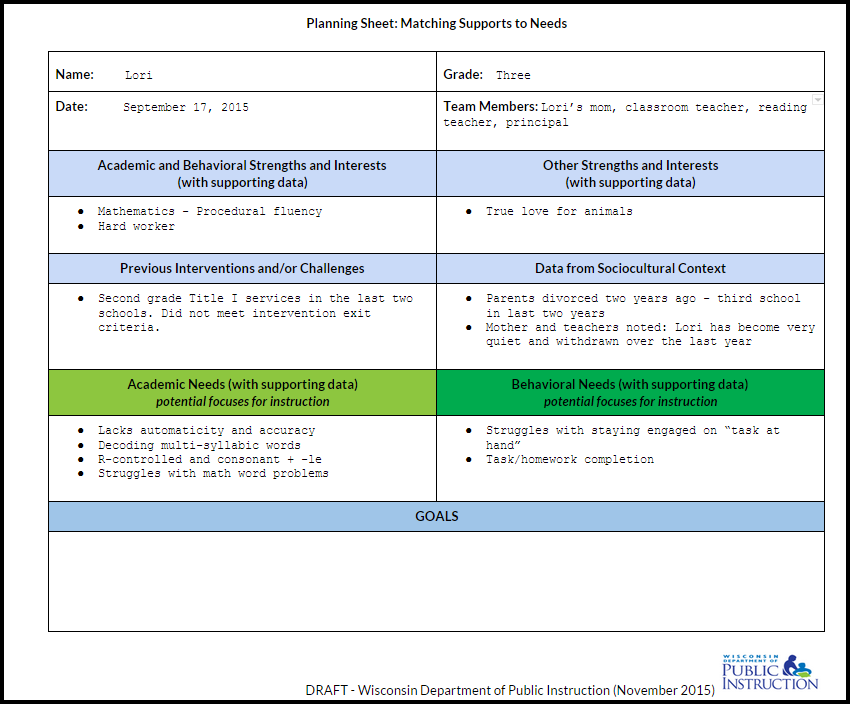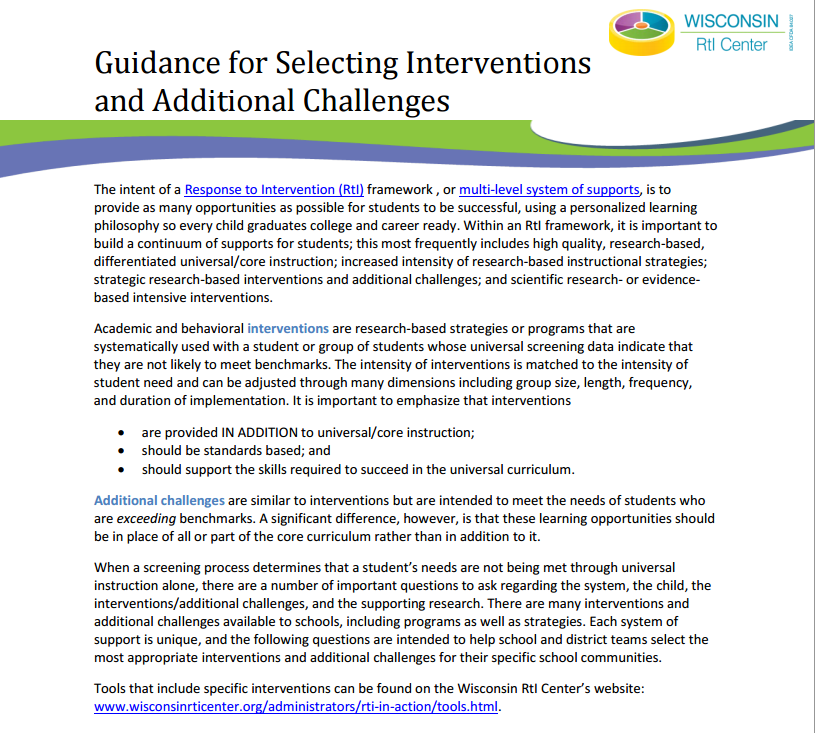Background
- ways to immediately improve outcomes for individual students, while also strengthening a multi-level system of support
- a process for developing a “profile” of a reader when he/she struggles
- a process for personalizing instruction to meet the needs of a reader when he/she struggles
These resources can be downloaded, customized, and used to facilitate professional learning of educators that is focused on improving outcomes for readers when they struggle. We recommend utilizing the materials in teams (such as professional learning communities) including teachers from general and special education and support teachers (such as reading or ELL teachers).
The materials are separated into four parts. Each part includes a presentation with speaker notes and handouts. Begin with the module that best meets the needs of your school/district.
Access the presentation used at the Collaborative Program Support Teacher Meeting (December 2015).
Part One: Introduction
This introductory module creates a sense of urgency for improving outcomes for our readers who struggle by sharing data about current performance of some of Wisconsin’s student groups, including students with disabilities, English language learners, and students living in poverty. The module also makes connections between educational innovations including Results Driven Accountability (RDA), Agenda 2017, college and career readiness, and Wisconsin’s academic standards for reading. Click on the word here to access the slides for the introductory module.
Part Two: Improving Outcomes through a Culturally Responsive Multi-Level System of Support
This module asks participants to consider how their school/district systemically and systematically supports readers when they struggle through both universal instruction and intervention. Teams will discuss continuum of supports for reading, high quality instruction (curriculum, instruction, and assessment), culturally responsive practice, and universal design for learning (UDL). Click on the word here to access this module.
Handouts
Note-Taking Tool: Culturally Responsive Multi-Level System of Support
Use this note-taking sheet to record thinking from your team’s discussion, including potential action steps
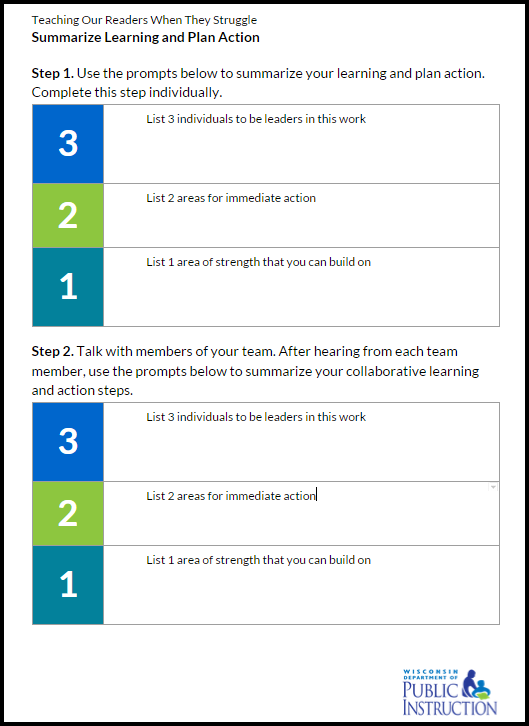 Summarize Learning and Action Plan
Summarize Learning and Action Plan
Use to summarize learning and set individual and team goals
Part Three: Assessment of Skilled Reading
Interventions for readers who struggle should be intentionally matched to the student’s strengths and needs. This module explores areas that could be considered when conducting a comprehensive evaluation of a reader’s strengths and needs. The module begins by exploring what it means to be a skilled reader. Next, participants consider how diagnostic reading assessment fits within their school/district’s larger strategic assessment system. The module ends by explaining areas that could be assessed and offering some possible assessments. Areas include comprehension, concepts about print, phonological awareness, phonics, fluency, motivation and engagement, and past and present successes. Click on the word here to access this module.
Handouts
Note-Taking: Skilled Reader
Use to organize and synthesize thinking about varied models of a skilled reader
 Note-taking Tool: Assessment
Note-taking Tool: Assessment
Use to organize and synthesize thinking about areas of reading, including definitions and ideas for assessment
Part 4: Matching Supports to Needs
This module provides a process a team can use to match a student’s strengths and needs to reading interventions. Participants will consider who should be included a decision-making team and explore two sample student profiles to consider how their system considers student strengths, previous interventions, data from a sociocultural context, and needs to set specific goals and select or design interventions. The module discusses the role of research in selecting or designing interventions and suggests a few online tools for considering interventions. Click on the word here to access this module.
Handouts
Literacy Resource Feedback
Your experience using this DPI-created professional learning resource is very valuable. Please help us understand your experience by responding to a few questions. Take the short survey.
Thank you for providing your feedback!
